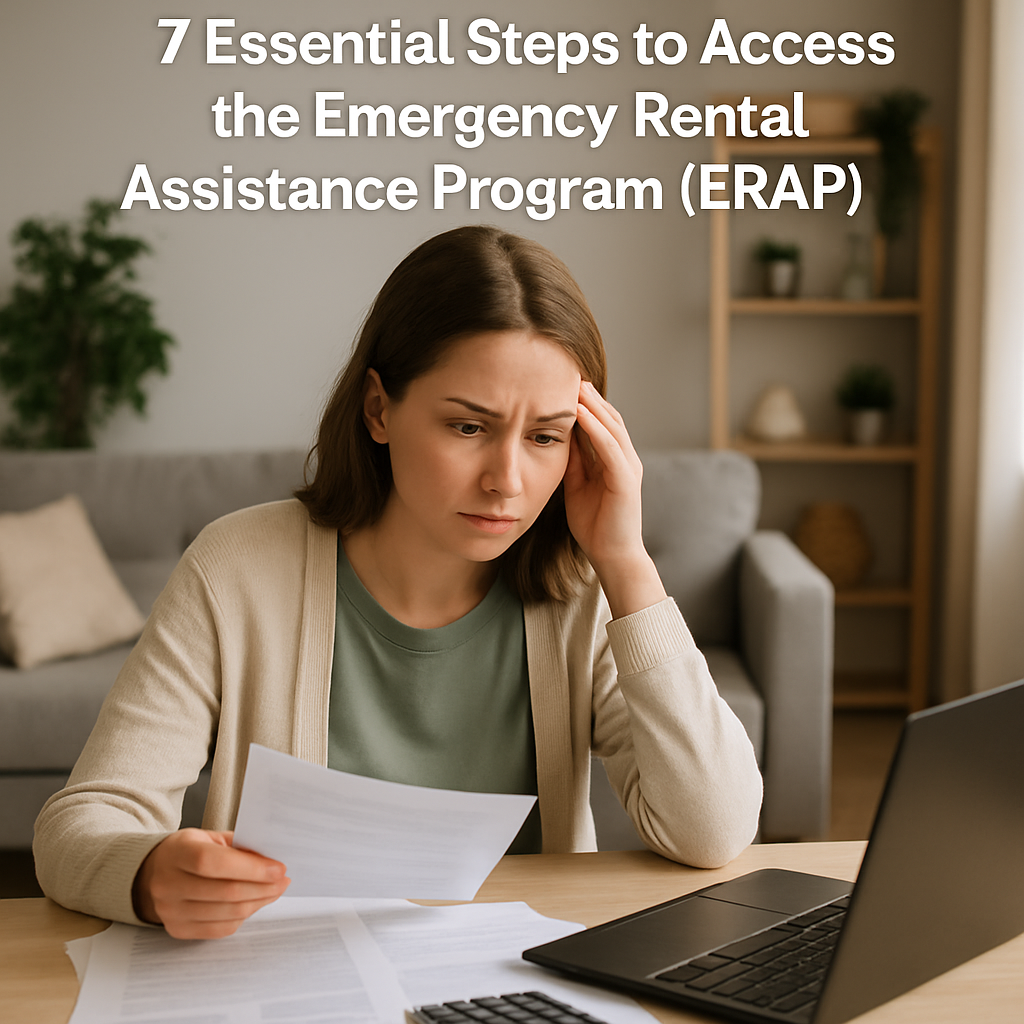In 2025, with rising housing costs and economic uncertainty, the Emergency Rental Assistance Program (ERAP) remains a critical resource for struggling tenants and landlords across the United States. Whether you’re facing eviction or trying to recoup unpaid rent, understanding how to apply for and maximize ERAP benefits could be the key to keeping your home or stabilizing your rental income.
This guide offers a step-by-step approach to navigating ERAP and includes only valid, official government links for cross-verification and application.

What Is the Emergency Rental Assistance Program (ERAP)?
ERAP is a federally funded initiative managed at the state and local levels to help eligible households cover:
- Past-due rent
- Forward rent (up to 3 months)
- Utility and home energy bills
- Other housing costs due to the COVID-19 pandemic or financial hardship
The program prioritizes low-income households, especially those at risk of homelessness or housing instability.

Step 1: Check If You’re Eligible
To qualify for ERAP, you generally must:
- Have a household income below 80% of the area median income (AMI)
- Demonstrate risk of housing instability or homelessness
- Have experienced financial hardship due to COVID-19 or its economic aftermath
- Be a renter (or a landlord applying on behalf of a tenant)
Tip: Use the HUD Area Median Income tool to check your eligibility: https://www.huduser.gov/portal/datasets/il.html
Step 2: Locate Your Local ERAP Portal
Because ERAP is distributed through local agencies, the application process varies by state and county.
Official Finder Tool: Visit the National Low Income Housing Coalition (NLIHC) portal to locate your local ERAP provider: https://nlihc.org/rental-assistance
You can also visit the U.S. Treasury’s Emergency Rental Assistance page: https://home.treasury.gov/policy-issues/cares/emergency-rental-assistance-program
Step 3: Gather Required Documents
Prepare these documents before applying:
- Photo ID (driver’s license, passport, etc.)
- Proof of income (tax return, pay stubs, unemployment letter)
- Lease or rental agreement
- Eviction notice or letter from landlord (if applicable)
- Utility bills (if applying for assistance with utilities)
Reminder: Some states may require a landlord’s W-9 form for payment processing.
Step 4: Apply Online or In Person
Visit your local ERAP portal to submit an application. Some cities also allow paper submissions or offer phone assistance.
Example: California Residents
- Application portal: https://housing.ca.gov/
- Call Center: 1-833-430-2122
Example: New York State
- ERAP Info Page: https://otda.ny.gov/programs/emergency-rental-assistance/
Note: Processing times may vary by location, but many programs offer real-time tracking once you submit.
Step 5: Follow Up With Landlord or Case Manager
- Ensure your landlord has completed their portion of the application.
- Respond to any emails or calls from case managers promptly.
- Some jurisdictions allow payment directly to tenants if landlords are uncooperative.
Landlord Tip: Encourage tenant participation by providing necessary documents upfront to avoid delays.
Step 6: Track Your Application and Payments
Once submitted, monitor your application status regularly.
HUD’s Housing Assistance Info: https://www.hud.gov/rent_relief
If approved, funds are typically disbursed:
- Directly to the landlord or utility company
- Within 2-4 weeks depending on documentation and workload
Step 7: Understand What Comes Next
ERAP is not a permanent solution, but it can buy critical time.
After receiving funds:
- Stay in communication with your landlord
- Explore long-term rental assistance programs through HUD
- Use the extra time to stabilize employment or income
Explore Section 8 and Public Housing Options: https://www.hud.gov/topics/housing_choice_voucher_program_section_8

FAQs About the Emergency Rental Assistance Program (ERAP)
Can landlords apply on behalf of tenants?
Yes. Most programs allow landlords to apply with tenant consent.
Are undocumented immigrants eligible?
Eligibility rules vary by state, but some states do not ask about immigration status.
Can I reapply if I need more help?
Yes, in many locations you can reapply for additional months if funds are still available.
Will ERAP cover my future rent?
Yes, up to 3 months in advance in some programs.
Final Thoughts: Don’t Wait to Apply
With limited funding and high demand, it’s crucial to apply as soon as you’re eligible. ERAP funds can prevent eviction, keep your utilities running, and reduce long-term housing instability.
Interactive Challenge: Take 15 minutes today to visit your local ERAP portal and start the application or help a neighbor do the same.
Disclaimer
This blog is for informational purposes only. Always verify eligibility requirements and program rules through official U.S. government websites before applying. We do not guarantee benefit approval or fund disbursement. All images used in this article are royalty‑free or licensed for commercial use and are provided here for illustrative purposes.
Useful ERAP Links at a Glance